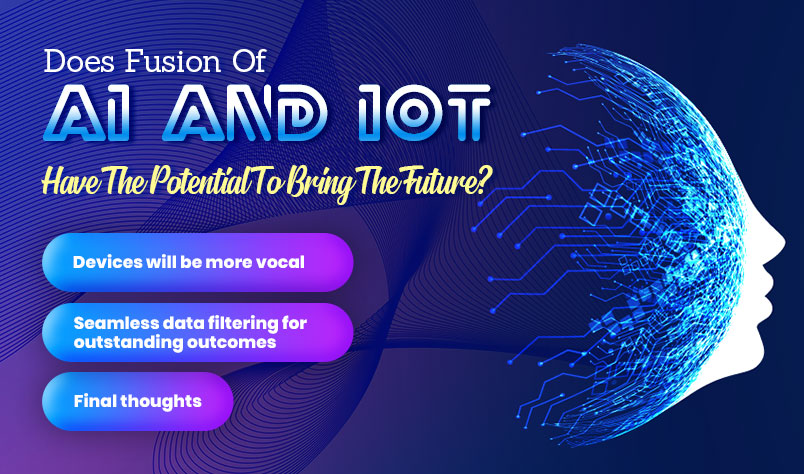-
Get Cloud GPU Server - Register Now!
Toggle navigation

We are living in a technology-driven world, where multiple things can be done with minimal effort. With every advancement in present technologies, we experience a notable change in our life. Currently, the two buzzwords are — ‘Artificial Intelligence (AI)’ and ‘Internet of Things (IoT).’
But we are still very far from the future that Hollywood’s science-fiction flicks have shown us. I am talking about the future where switching lights off or on can be done with a single snap, where we see driverless cars running on roads, and so on.
By all means, multinational companies in different industries are endeavoring to ring in the future, but they are still far from achieving their goal, unfortunately. As far as patience is concerned, it has never been the strongest virtue of the human race… Jeez! I am not different either.
To speed up the pace, companies are coalescing artificial intelligence and the internet of things. I reckon this fusion will offer great help in the pursuance of bringing the future now.
And if you have been reading my write-ups for months, you should already know that I always add some statistics with the purpose of surprising my readers and maintaining the authenticity of the information I am sharing.
According to Gartner, over 80% of organizations will include an AI component in their IoT projects by 2022, which is amazing as compared to the current scenario where only 10% of companies are doing the same.
Let’s take a look at how the internet of things can do wonders with applications of artificial intelligence:
Amazon’s Alexa and Apple’s Siri are the most common real-time example of how AI and IoT can work together. We all get the royal feeling when our smartphone delivers the desired results on the screen after getting voice commands. But believe me, this is merely a glimpse of what is coming ahead.
To bring self-driving cars into reality, automobile companies like Waymo, Tesla etc. are putting their best foot forward. With the aim of taking the driving experience to a whole new level, a big lump of cash is also being invested in IoT projects.
According to emerging rumors, many car manufacturers are working on virtual assistants that will lend a hand to drivers in the pursuit of driving more safely and conveniently. Devices powered by AIIOT help drivers avert heavy traffic jams, send messages without touching phones, reach the destination faster and safer, etc.
In simple words, an amalgamation of AI and IoT can lead us to the realm where things are more real than ones that stay as part of the fictional world.
Read Also: How AI Can Revolutionize the Digital Marketing World
‘Do you know how IoT works?’
Nope?
Well, IoT works on a basic principle: when a device is connected to the internet, it sends some data containing digital information. After receiving the pertinent data from another source present somewhere on the web, it acts on the commands of the user.
And the catch here is most of the data collected by IoT devices is of no use. IoT applications like security cameras pass on terabytes of recording data to server or cloud, but relevant video data showing suspicious or illegal activity is usually only within a few megabytes. Wiping out unimportant data is crucial to pre-empting the hassle of server failure.
This is where the salience of applications of artificial intelligence snowballs. You shouldn’t be surprised upon knowing this, because AI has always been known for its data filtering capability, which also helps it learn and become better via machine learning.
Needless to say, when devices start taking care of data storage computations on their own, networks will not be clogged with traffic. Hence, more computing power will be available, which as a positive corollary, leads to outstanding outcomes.
Read Also: AI & IOT Evolves At The Core Of Innovation
One thing I can say for sure is that we are going to have an amazing life as long as today’s current technology is advancing.
It is beyond a shadow of a doubt that the internet of things is impressive and going to stay for ages. However, it can’t do much in the absence of AI.
Of course, both IoT and AI have their importance at the right places. These technologies can do wonders if they get combined, although that’s a challenging task for businesses.
Reality check: There would be no fun without challenges. Here, I recall a quote from Joshua J. Marine:
“Challenges are what make life interesting and overcoming them is what makes it meaningful.”
In the same vein, the two major challenges AI is facing in working side by side with IoT are: ‘Compatibility’ and ‘Complexity.’
For common applications like virtual voice assistants, these issues don’t generally arise, as both AI and IoT are 100% compatible with each other. But the situation turns on its head when major projects like self-driving cars come into consideration.
It would be exciting to see how the current situation of integrating AI into the functions of IoT progresses.
Thanks for reading